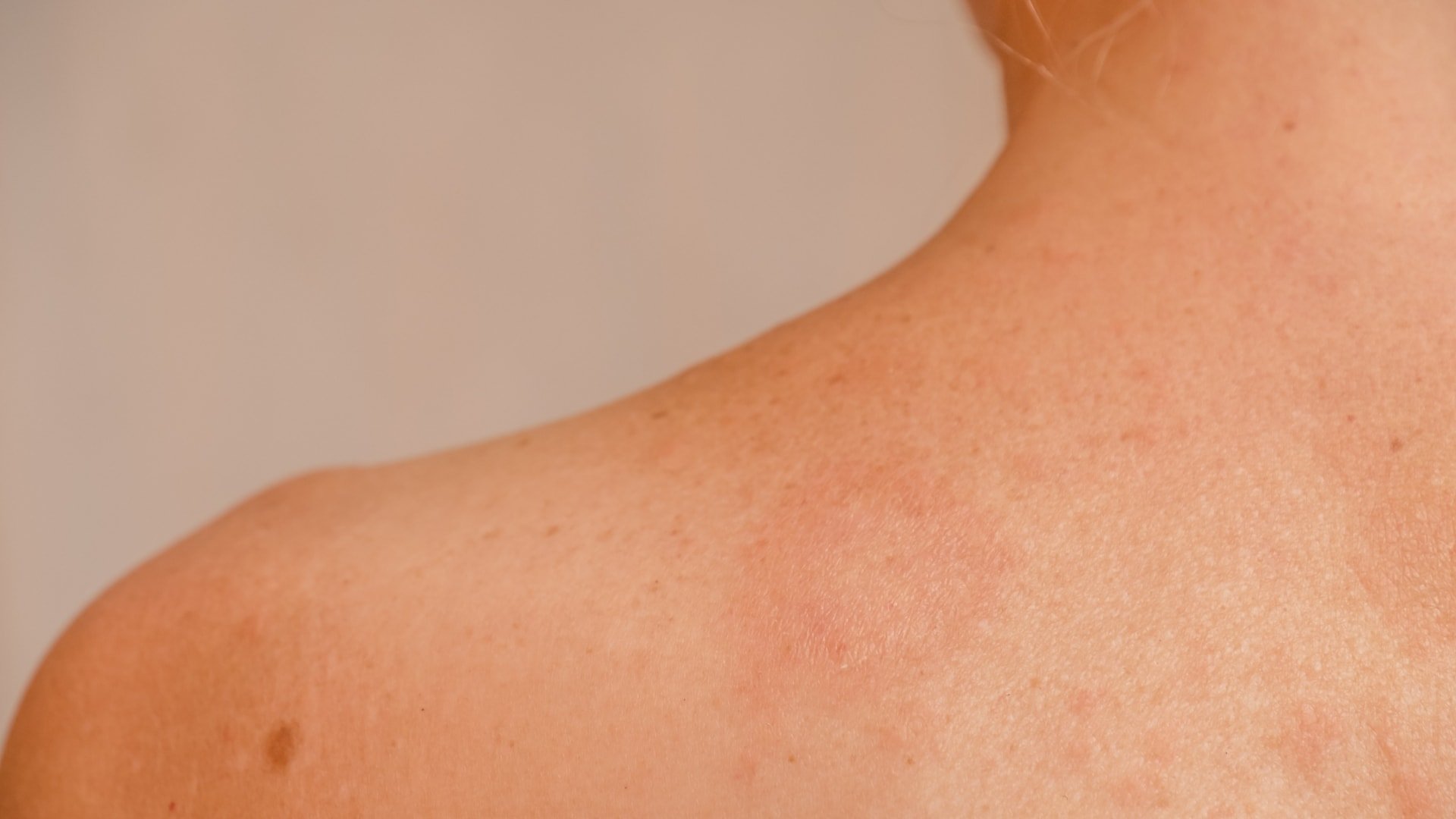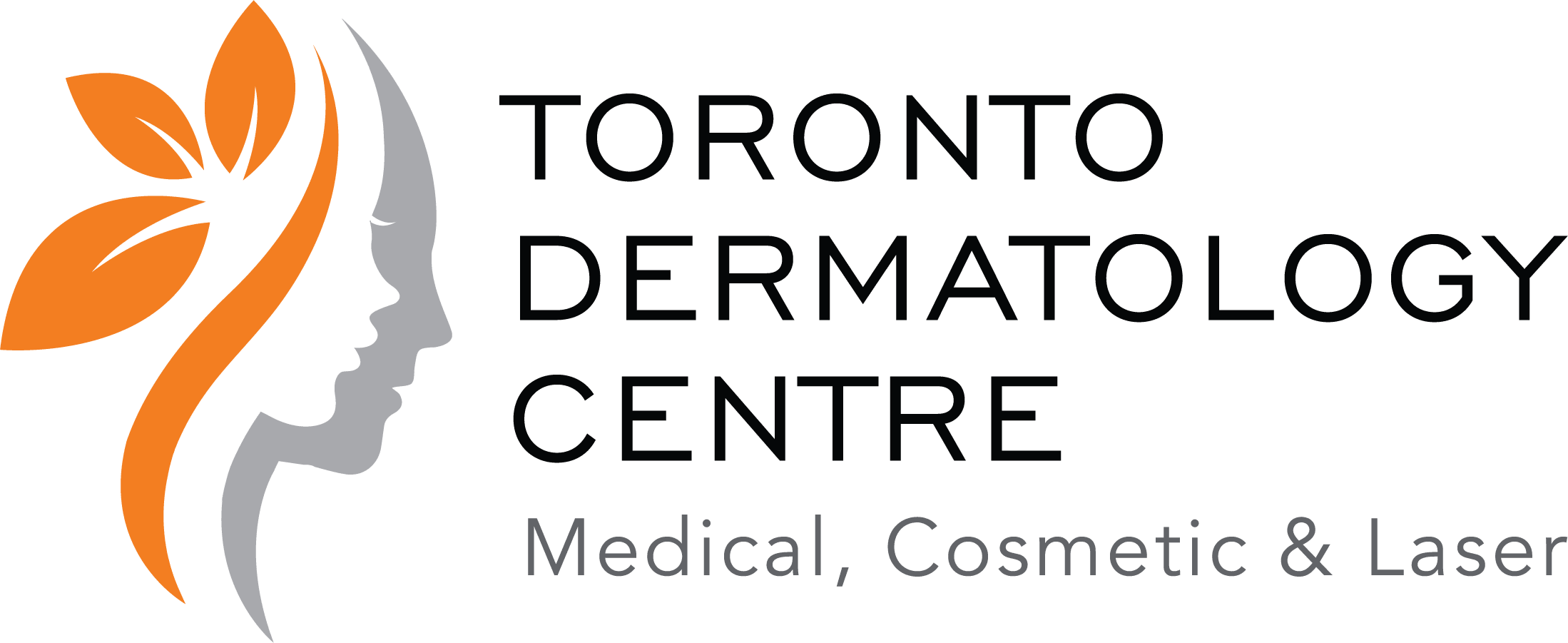The Toronto Dermatology Centre is one of the top clinics in Canada to manage your skin rashes such as pityriasis rosea. Our staff of outstanding Toronto dermatologists offer both a comprehensive assessment and diagnosis of your skin, but also discuss all the treatment options (oral vs topical).
Pityriasis rosea rash occurs most commonly in people between the ages of 10 and 35, but may occur at any age. The rash can last from several weeks to several months. Usually there are no permanent marks as a result of this condition, although some darker-skinned persons may develop long-lasting flat brown spots that eventually fade. Pityriasis rosea may occur at anytime of year, but it is most common in the spring and fall.
Signs and Symptoms of Pityriasis Rosea
Pityriasis rosea usually begins with a large, scaly, pink patch on the chest or back, which is called a “herald” patch. It is frequently confused with ringworm, but antifungal creams do not help because it is not a fungus.
Within a week or two, more pink patches appear on the chest, back, arms, and legs. Pityriasis rosea may also occur on the neck, but rarely on the face. The patches are oval and may form a pattern over the back that resembles the outline of a Christmas tree. Sometimes the disease can produce a very severe and widespread skin eruption, and can also be itchy. The pityriasis rosea rash usually fades and disappears within six to eight weeks, but can sometimes last much longer.

What causes Pityriasis Rosea?
The cause is unknown. Pityriasis rosea is not a sign of any internal disease, nor is it caused by a fungus, a bacteria, or an allergy. There is recent evidence suggesting that it may be caused by a virus since the rash resembles certain viral illnesses, and occasionally a person feels slightly ill for a short while just before the rash appears. Pityriasis rosea does not spread from person to person and it usually occurs only once in a lifetime.
Diagnosis
The diagnosis is made by a physician. Pityriasis rosea affects the back, neck, chest, abdomen, upper arms, and legs, but the rash may differ from person to person making the diagnosis more difficult. The numbers and sizes of the spots can also vary, and occasionally the rash can be found in an unusual location such as the lower body, or on the face. This usually occurs in older individuals. Fungal infections, like ringworm, may resemble this rash. Reactions to certain medications, such as antibiotics, “water pills,” and heart medications can also look the same as pityriasis rosea. The dermatologist may order blood tests, scrape the skin, or take a sample from one of the spots (skin biopsy), to examine under a microscope to make the diagnosis.
Pityriasis Rosea Treatment
Pityriasis rosea is a common skin disorder and is usually mild. Most cases usually do not need treatment and fortunately, even the most severe cases eventually go away. However, treatment may include medications for itching. Soothing medicated lotions and lubricants may be prescribed. Sun exposure or ultraviolet light treatments given under the supervision of a dermatologist may be helpful. Occasionally, anti-inflammatory medications such as steroid creams may be necessary to stop itching or make the rash go away.
Here is a selection of media and scientific articles by our renowned dermatologists Dr. Benjamin Barankin and Dr. Anatoli Freiman as they pertain to pityriasis rosea.
Toronto Dermatology Centre is located in Toronto, Ontario, and serves men and women in North York, Vaughan, Richmond Hill, York, Aurora, Thornhill, Mississauga, Scarborough, Brampton, Etobicoke, Pickering, Peterborough, Guelph, Kitchener, Oakville, Barrie and all of Greater Toronto (GTA).
Thinking of visiting Toronto’s premier skin clinic soon?
Fill out the inquiry form below and let us know your area of interest.
Call us today @ 416.633.0001
